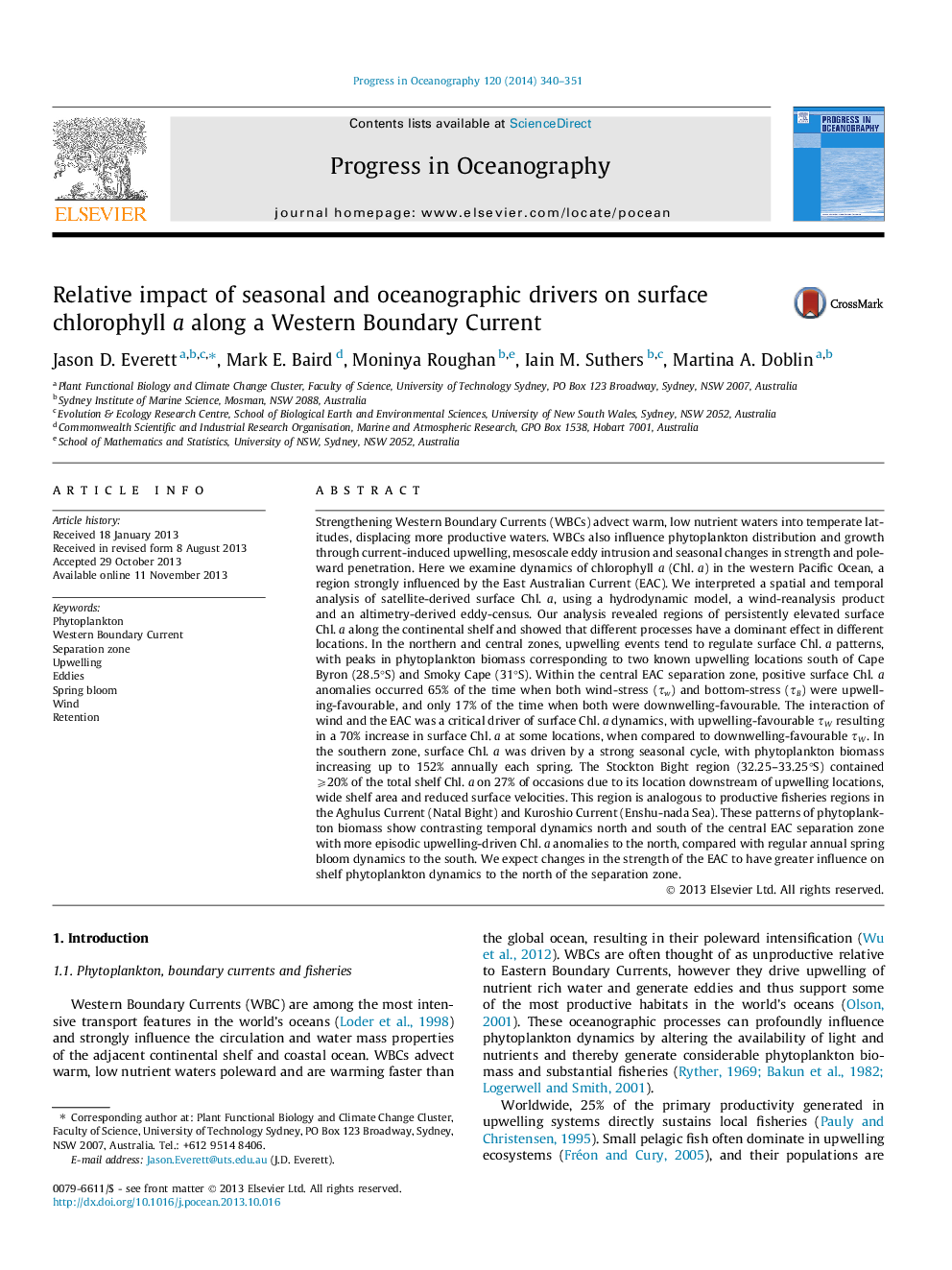| Article ID | Journal | Published Year | Pages | File Type |
|---|---|---|---|---|
| 6388685 | Progress in Oceanography | 2014 | 12 Pages |
Abstract
Strengthening Western Boundary Currents (WBCs) advect warm, low nutrient waters into temperate latitudes, displacing more productive waters. WBCs also influence phytoplankton distribution and growth through current-induced upwelling, mesoscale eddy intrusion and seasonal changes in strength and poleward penetration. Here we examine dynamics of chlorophyll a (Chl. a) in the western Pacific Ocean, a region strongly influenced by the East Australian Current (EAC). We interpreted a spatial and temporal analysis of satellite-derived surface Chl. a, using a hydrodynamic model, a wind-reanalysis product and an altimetry-derived eddy-census. Our analysis revealed regions of persistently elevated surface Chl. a along the continental shelf and showed that different processes have a dominant effect in different locations. In the northern and central zones, upwelling events tend to regulate surface Chl. a patterns, with peaks in phytoplankton biomass corresponding to two known upwelling locations south of Cape Byron (28.5°S) and Smoky Cape (31°S). Within the central EAC separation zone, positive surface Chl. a anomalies occurred 65% of the time when both wind-stress (Ïw) and bottom-stress (ÏB) were upwelling-favourable, and only 17% of the time when both were downwelling-favourable. The interaction of wind and the EAC was a critical driver of surface Chl. a dynamics, with upwelling-favourable ÏW resulting in a 70% increase in surface Chl. a at some locations, when compared to downwelling-favourable ÏW. In the southern zone, surface Chl. a was driven by a strong seasonal cycle, with phytoplankton biomass increasing up to 152% annually each spring. The Stockton Bight region (32.25-33.25°S) contained ⩾20% of the total shelf Chl. a on 27% of occasions due to its location downstream of upwelling locations, wide shelf area and reduced surface velocities. This region is analogous to productive fisheries regions in the Aghulus Current (Natal Bight) and Kuroshio Current (Enshu-nada Sea). These patterns of phytoplankton biomass show contrasting temporal dynamics north and south of the central EAC separation zone with more episodic upwelling-driven Chl. a anomalies to the north, compared with regular annual spring bloom dynamics to the south. We expect changes in the strength of the EAC to have greater influence on shelf phytoplankton dynamics to the north of the separation zone.
Keywords
Related Topics
Physical Sciences and Engineering
Earth and Planetary Sciences
Geology
Authors
Jason D. Everett, Mark E. Baird, Moninya Roughan, Iain M. Suthers, Martina A. Doblin,
